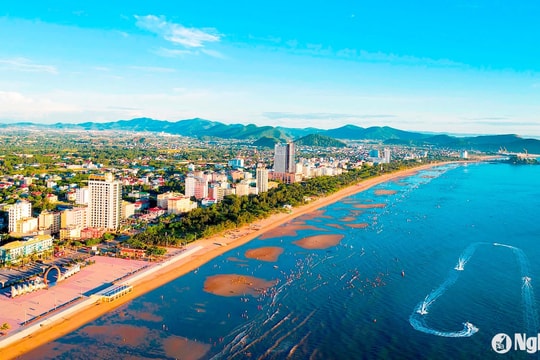Nghe An: Developing 10 fishing ports for 105,000 boats/year
(Baonghean) - In recent years, Nghe An has been one of the localities that has received great attention in investment in building and upgrading fishing infrastructure. However, to ensure fishermen can truly feel secure in going offshore, the policy of the Central Government and the province is to continue to have priority policies for this field.
Upgrading fishing infrastructure
The project to upgrade and expand Cua Hoi Fishing Port has a total estimated budget of 107 billion VND, and according to Mr. Nguyen Huu Tien - Deputy Director of Nghe An Department of Agriculture and Rural Development, after completion, the port will have a new wharf for ships with a maximum capacity of 800CV to enter and exit.
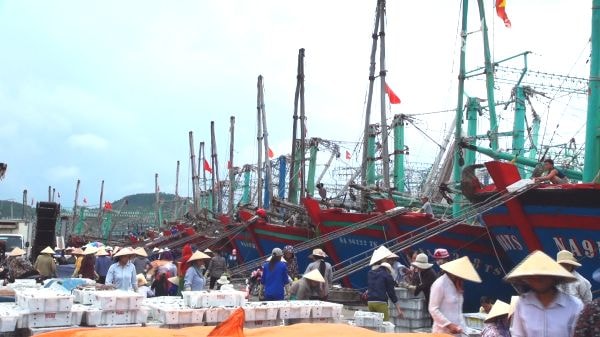 |
| Bustling fishing boats returning at Lach Quen estuary. Photo: Viet Hung |
Up to now, after more than 1 year of starting the project, the bridge connecting the existing wharf and the newly built wharf combined with the 250 CV wharf and the sea encroachment embankment to create a site for the construction of a seafood classification house and other fisheries infrastructure works with an area of 1.4 hectares is being urgently built. Other items such as renovating the seafood classification house on the wharf, upgrading and repairing technical infrastructure systems will also be accelerated so that the project can be completed and handed over for use in 2018.
Previously, in 2015, the project to upgrade Lach Van Fishing Port, invested by the Department of Agriculture and Rural Development, was completed in late 2013 and put into use, with a total capital of 34 billion VND funded by the World Bank. The project covers an area of over 7,000 square meters, including items such as upgrading and expanding the fishing port, building market stalls, canopies, product sales tables, wastewater treatment systems, and clean water systems.... This investment and upgrade is very important in helping boats enter and exit the fishing port more easily, and the products that people catch are well preserved and ensure food hygiene and safety.
These are just two of the fishing port projects in the province that have received the State's attention in investing in upgrading in recent years. In addition to Cua Hoi Fishing Port, Lach Quen Fishing Port has also been planned by the Government as a type 1 fishing port, with 100% of the central government's capital invested in it. Although it has not yet been upgraded or expanded, the project has been included in the medium-term capital plan for investment. Lach Con Fishing Port is also being newly built, and the Lach Quen and Lach Van storm shelters have both been invested in and built.
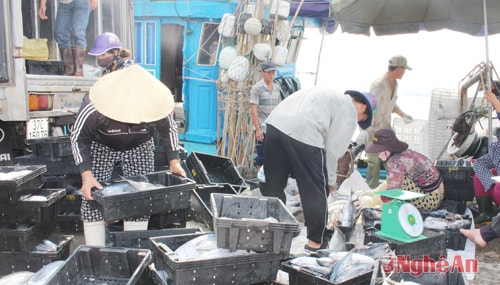 |
| Fish returning at Cua Hoi wharf. Photo by Phu Huong |
To encourage fishermen to shift their exploitation from the inshore area to the offshore area, reaching out to the large fishing grounds of Hoang Sa and Truong Sa, Hoang Mai Town is also being upgraded by the province at Lach Con Port and the storm shelter anchorage area with a total investment of over 50 billion VND, expected to be completed by the end of 2017. The town is also implementing the construction project of Quynh Phuong fishing port with a total investment of over 65 billion VND; Quynh Lap breakwater is about to be completed and effective.
After being upgraded, it will greatly support the docking of ships into the port, the transfer of seafood products to shore as well as the transportation of essential goods and supplies to ships for sea voyages. In the coming time, the town will propose to continue supporting the dredging of Lach Con Port and a section of Nha Le River to create a storm shelter for large-capacity ships currently having to take refuge in Thanh Hoa and some southern provinces.
In 2015, Quynh Phuong fishing port (Hoang Mai town) with a capacity of 400 ships was put into use; Lach Van fishing port was upgraded and expanded with a capacity of 700 ships. It is expected that in 2020, Lach Quen fishing port will be upgraded and expanded with a capacity of 300 ships, and the second phase of Quynh Phuong fishing port with a capacity of 200 - 300 ships will be invested.
Nghe An currently has 3 fishing ports and 6 fishing wharves with a total capacity of nearly 25,000 arrivals/year. This is a regular anchorage for fishing boats, many fishing ports have invested in building wharves and embankments. |
Continue to prioritize investment
Although fishing ports have been invested in upgrading and expanding, due to specific characteristics such as the need for too much capital, the natural conditions in the coastal areas with narrow land, and the frequent silting of waterways, there are still many problems that need to be solved to meet the needs of ships going out to sea. Mr. To Duy The - Vice Chairman of the Fisheries Association of Quynh Nghia Commune (Quynh Luu) said that in 2007 - 2008, Quynh Nghia fishing port was invested in building a 90m long berth, which used to have about 130 ships coming in and out regularly.
But in the past few or three years, since the oyster farming movement on the river has strongly developed, encroaching on the riverbed, plus the national defense road built on the other side of the river has also narrowed the riverbed, the boats of Manh Son parish, Tan An hamlet of An Hoa commune have strongly developed, large capacity boats have narrowed the anchorage space, many times the boats are anchored completely on the Mo riverbed, only small boats can get in and out; collisions between boats often occur.
Son Hai Commune (Quynh Luu) has 265 fishing boats, mainly offshore fishing boats, monoculture squid fishing and grouper fishing for export. For the past ten years, the estuary has been silted up, making it difficult for boats to enter and exit. In 2014, there was a project to dredge the canal, but the efficiency was not high. Currently, large boats have to anchor at Lach Quen wharf. Only boats with a capacity of 200 CV to 400 CV can enter and exit Lach Thoi, but they also have to wait for high tide to enter and exit. Currently, the project is continuing to prepare for phase 2, but according to Mr. Cao Xuan Diep - Secretary of the Commune Party Committee, for the project to be effective, the contractor needs to conduct a field survey to come up with a suitable technical solution.
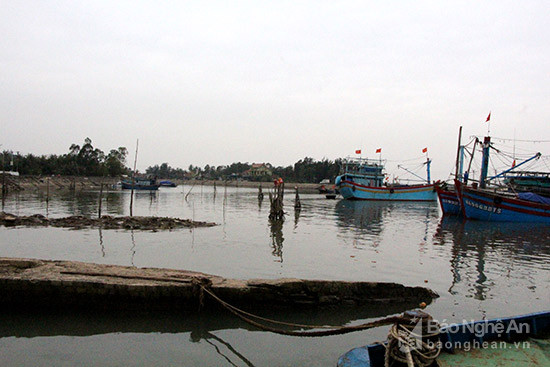 |
| Lach Quen fishing wharf is shallow and has rocky protrusions. Photo by Chau Lan |
At Lach Van port, fishermen cannot build large ships to go out to sea even if they want to because the channel is shallow and silted up. If it is not dredged, it will be difficult for boats to enter and exit, even dangerous, and they can easily run aground or even capsize, especially when the moon has not risen and the water is low. In addition, according to Mr. Nguyen Huu Tho - Director of Nghe An Fishing Port Management Board, except for Cua Hoi port, most of the other ports in the area are shallow, while Nghe An's number of fishing boats is not the largest in the country, but its average capacity is the largest.
Fishing ports are all small in area, making it difficult to expand and develop fishing logistics services. Small ports, concentrated seagoing seasons, lead to overloaded conditions, with boats crowded together, not only making it difficult to anchor, gather supplies, and transport products ashore. The road system also has many shortcomings, affecting transportation activities and even the development of coastal material services.
Discussing this issue, Mr. Nguyen Huu Tien - Deputy Director of the Department of Agriculture and Rural Development said: In the coming time, the policy of the province as well as the Central Government is to continue to have a policy of prioritizing investment in aquatic infrastructure projects serving economic development such as seafood exploitation, fishing port systems, fishing wharves, and storm shelters for boats. The policy is that by 2020 the fishing port system will increase to 4 ports and by 2030 there will be about 5 ports with a total wharf length of about 4,560 m.
In addition, continue to upgrade existing fishing ports, by 2020 maintain 10 ports with a total capacity of 105,000 arrivals/year. Continue to complete the system of storm shelters, dredge the waterway system in the whole province to ensure convenient entry and exit for fishing vessels with a capacity of 1,500 CV by 2020.
Phu Huong

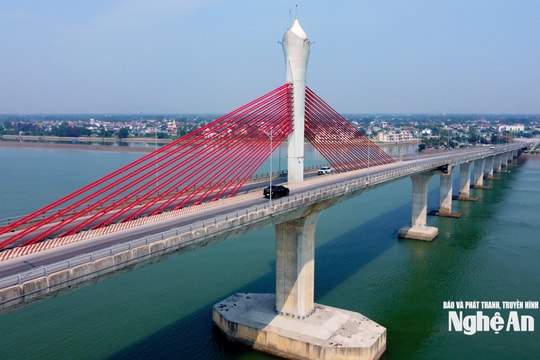


.jpg)

